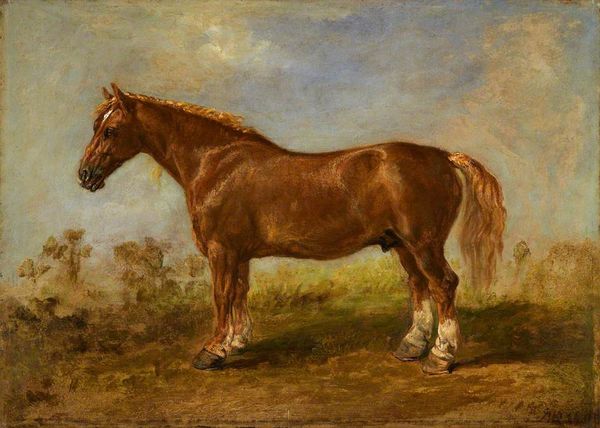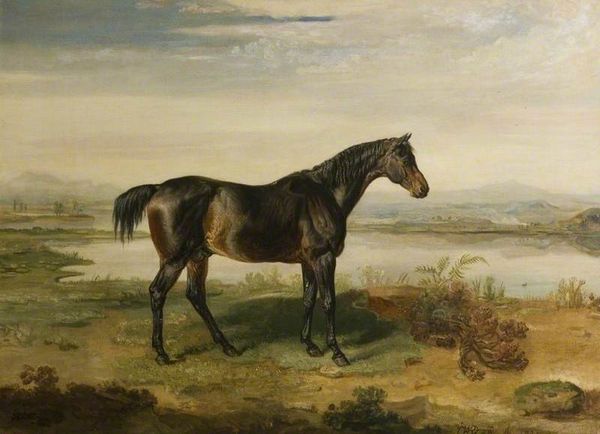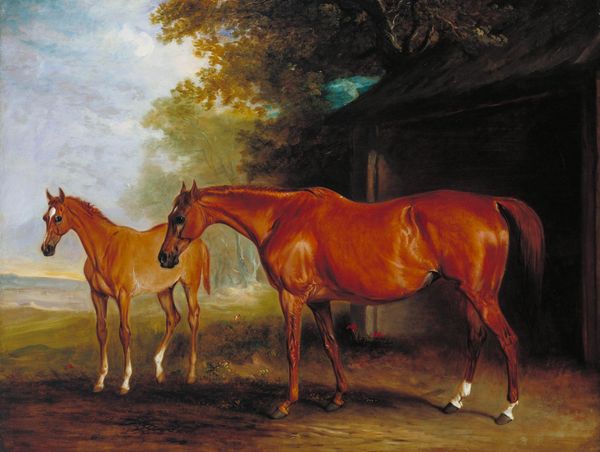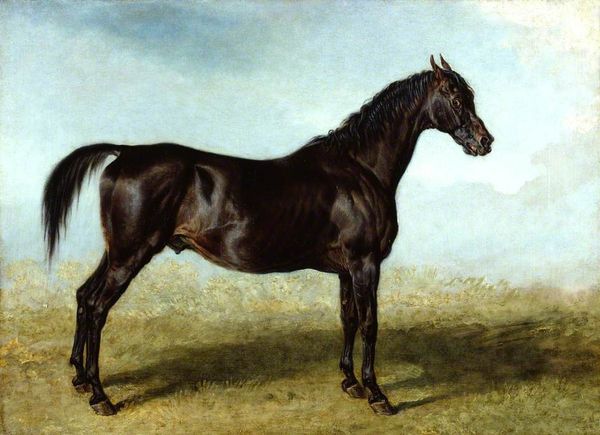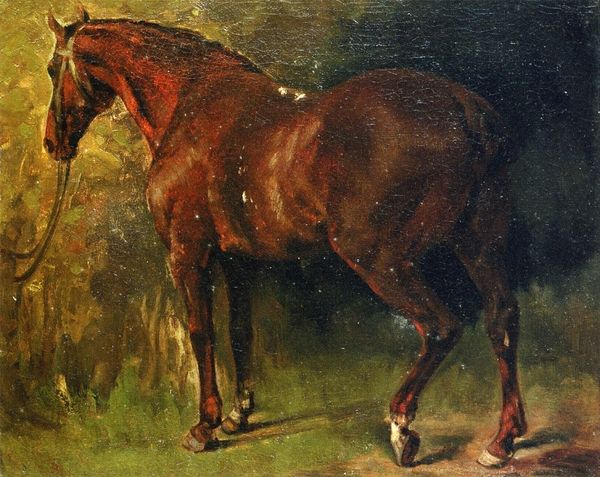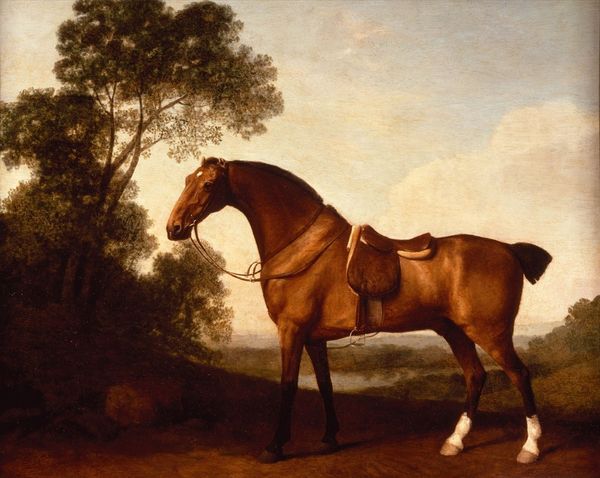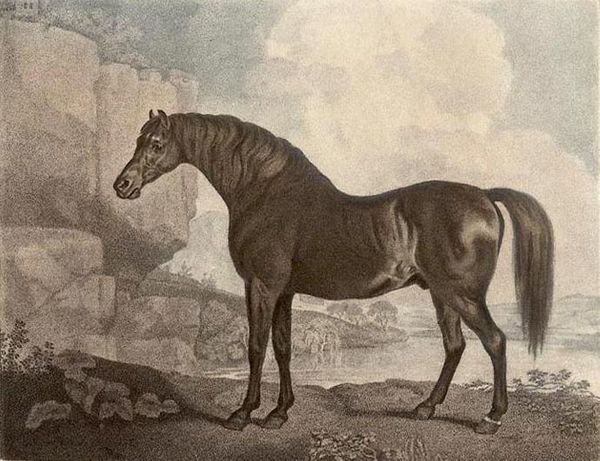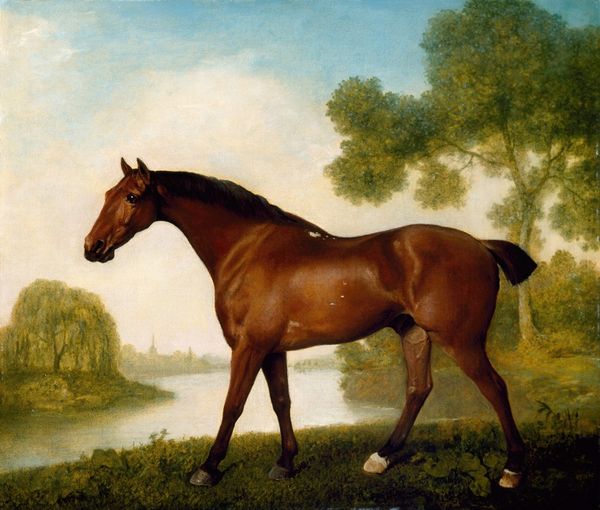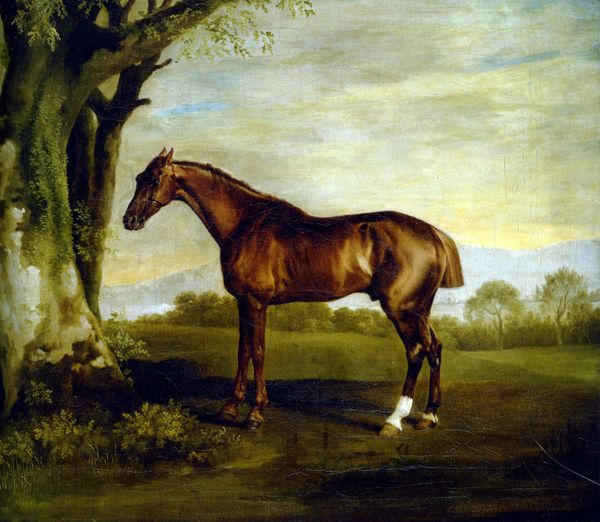
painting, oil-paint
#
portrait
#
sky
#
painting
#
oil-paint
#
landscape
#
figuration
#
oil painting
#
romanticism
#
animal portrait
#
horse
Copyright: Public domain
Curator: James Ward’s "A Chestnut Stallion in the Grounds of Powis Castle," created around 1818 using oil paint, presents a fascinating subject for our consideration today. Editor: Yes, quite striking! My immediate impression is its overwhelming sense of… romantic dominance. The sheer muscularity of the horse against that swirling, almost turbulent sky – it’s pure drama. Curator: Absolutely. And the painting offers insights into artistic production during the Romantic era. Ward, known for his animal paintings, notably horses, here depicts one seemingly caught between domesticity, as suggested by the castle in the background, and the unbridled freedom of the surrounding landscape. Consider also the economic context; animal portraiture served the needs of the land-owning gentry, a celebration of their wealth displayed as status symbols through their prized possessions. Editor: Indeed. And formally, the contrast between the meticulously rendered horse and the more loosely painted background is quite captivating. Notice how the light catches the stallion’s coat, defining every sinew, while the castle and grounds recede into an almost dreamlike haze. It's a study in contrasts. And the subdued palette reinforces a sense of melancholy, don't you think? Curator: The materiality, of course, speaks to the networks of trade and supply chains involved in acquiring the pigments and preparing the canvas. This artistic labor needs to be contextualized in its relationship to the broader society, especially how its production intersects with evolving socio-economic relations of land, power, and labor. Editor: Fascinating how our different perspectives illuminate such different facets of the work. It’s more than just a horse portrait; it's a tableau rich with implications. Curator: Precisely! It urges us to consider the circumstances that allowed such an image to come into being and the types of labour it represents and required. Editor: Yes, understanding the historical, social, and economic currents helps to more deeply appreciate this piece beyond just its aesthetic appeal.
Comments
No comments
Be the first to comment and join the conversation on the ultimate creative platform.
